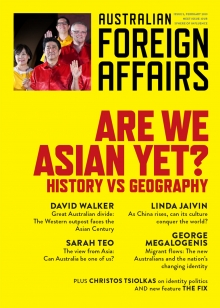In October 2010, the eighth Asia–Europe Meeting (ASEM) Summit in Brussels was a significant moment in the longstanding debate over Australia’s place in Asia. When it was formed in 1996, this cross-continental grouping required a clear delineation of Asian and European countries. The latter were relatively straightforward to pinpoint: members of the European Union. Identifying Asian countries was more complicated. The then seven member states of the Association of Southeast Asian Nations (ASEAN), along with China, Japan and South Korea, were, naturally, considered Asian. But framing Australia and New Zealand as Asian was more contentious. Their attempts to join ASEM when it was first established failed following Malaysia’s opposition over doubts about their Asian identity. In 2010, however, Australia and New Zealand were formally admitted.
Identity is a tricky thing. It is fluid, often contested and notoriously difficult to pin down. In this part of the world, the notion of regional identity is particularly challenging because competing classifications – “Asia”, “East Asia”, “Asia-Pacific”, “Indo-Pacific” – offer different interpretations. But perception is important in international affairs: it drives states’ behaviour. Whether Australia is viewed as Asian or non-Asian by its neighbours affects, in part, how Asian countries approach it and their responses to its foreign policy initiatives.








